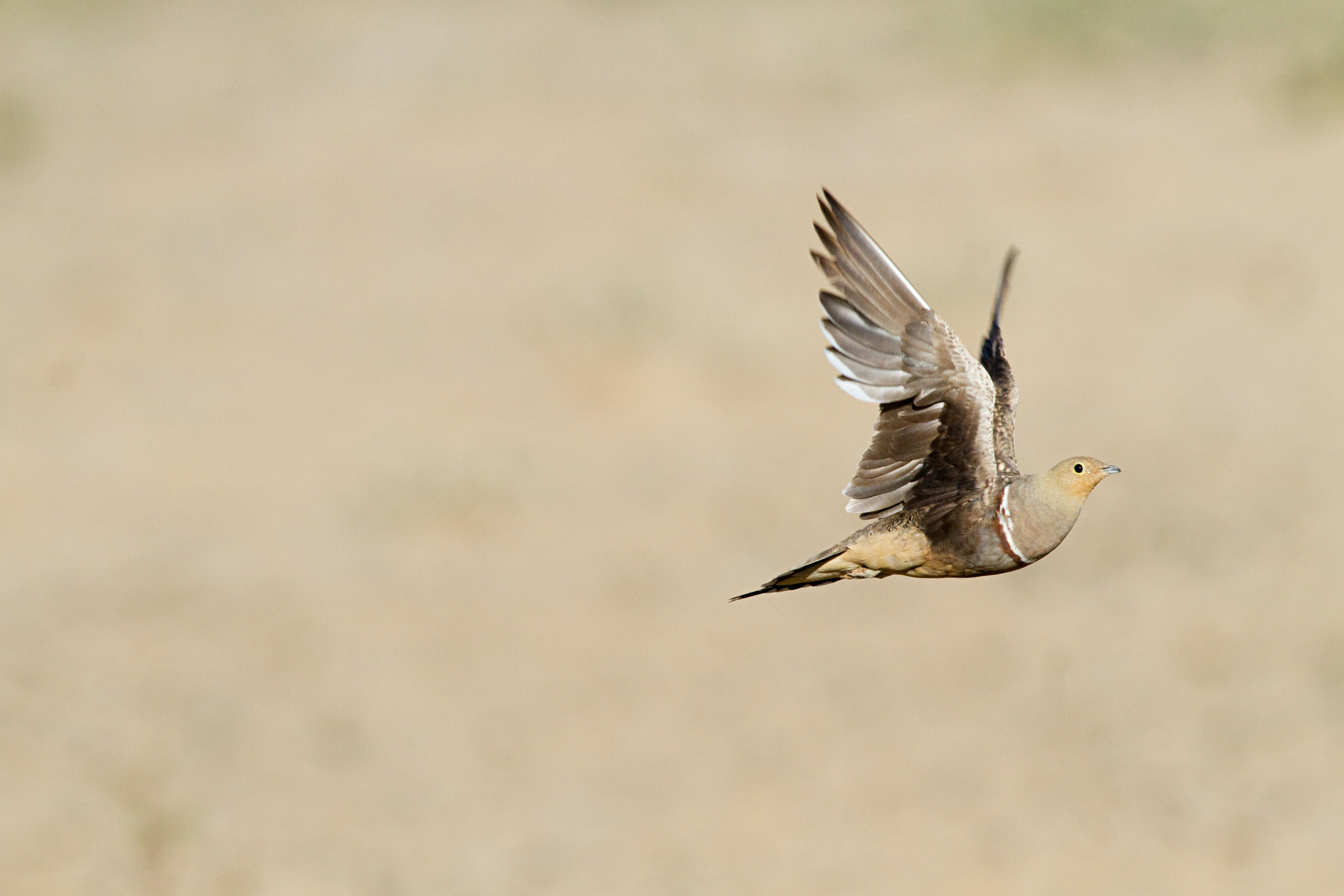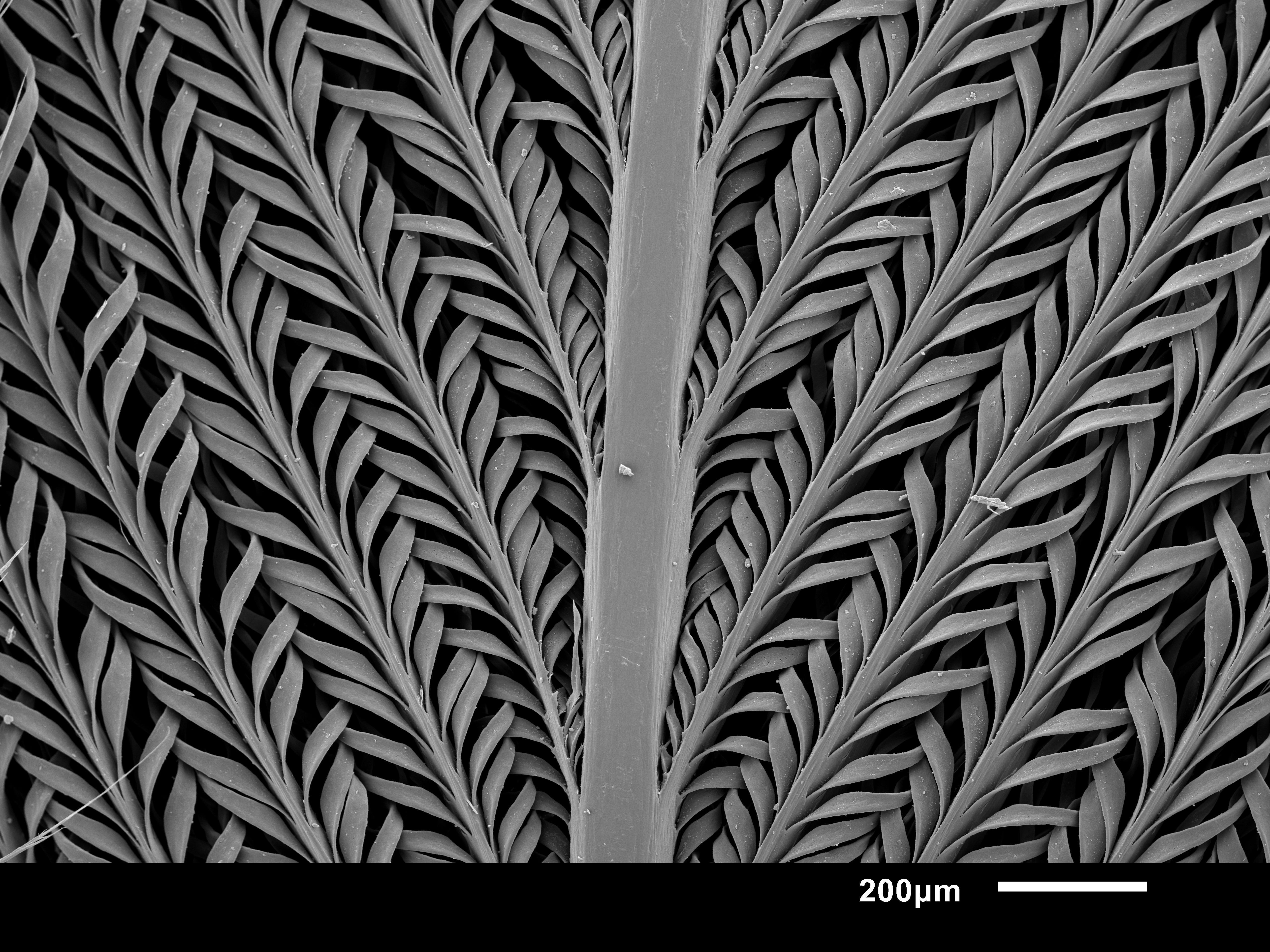
Water is one of the scarcest — yet most crucial — resources for desert-dwelling organisms. So these creatures have devised some creative ways to get enough of it. Some munch on water-rich cacti and succulents; others collect fog as it condenses on their backs. Camels were once believed to store water in their humps (though we now know that these are actually energy-dense layers of fat).
But one type of desert bird lives up to these camel dreams — it can haul around water in its feathers. Now, scientists know precisely how the Namaqua sandgrouse does it, according to new research published in the journal The Royal Society Interface. This remarkable feather physics could be used to design better water bottles, nasal swabs, or even techniques to harvest drinking water from the air.

Sandgrouse secrets
The Namaqua sandgrouse is a small, unassuming, and pigeon-like bird. It lives in the arid regions of southwest Africa, throughout the Kalahari and Namib deserts, as well as the Western Cape.
In these dry areas, water holds the key to life — but it can also invite death. Predators often lurk around watering holes, waiting to snag a tasty meal. So to protect its chicks, the sandgrouse has evolved an ingenious strategy: It nests many miles away from watering holes and carries H20 back to offspring in its belly feathers. The birds can carry up to 25 milliliters of water (almost one-sixth of their body weight).
“We’re not the first ones to discover that they transport the water to their young,” Jochen Mueller, a materials engineer at Johns Hopkins University and co-author of the new study, tells Inverse. This remarkable ability was first documented by English ornithologist Edmund Meade-Waldo in 1896. But his contemporaries dismissed the finding as fantasy, and Meade-Waldo’s findings wouldn’t be vindicated until over 70 years later.

Since then, a handful of scientists have described Namaqua sandgrouse nesting behavior and water transport tricks. But Mueller and his team noticed that past studies hadn’t detailed how exactly the bird’s feathers lock in liquid. So they decided to take a look at the feathers’ structure “with modern eyes.”
A bird’s feathers consist of three main parts: The central shaft (or rachis), branching barbs, and tiny barbules that lock the barbs together. In most feathers, these components form straight lines and run parallel or perpendicular to one another.
But when the researchers examined sandgrouse belly feathers with scanning electron microscopes to catch the smallest details, the barbules appeared coiled, forming tiny straw-like structures. This allows them to act like delicate blood vessels called capillaries, drawing water into the feathers as the bird wades into a pond or stream. Once saturated, the barbules uncoil and form a dense web that secures the water.
Of course, all that water is no good unless it can reach the chicks. “What’s also cool is, the whole process is reversible,” Mueller says. As the baby birds drink and dry the feathers out, they revert to their original coiled shape.
Future bottle designs
The researchers think that a new water bottle — or, more precisely, a water bladder — inspired by these feathers might be a more efficient water source for elite runners, hikers, or other athletes. Rather than a rigid plastic container that sloshes around as they move, they could carry a flexible sac with components that shapeshift as they dry, holding water in place.
Sandgrouse feathers might prove useful beyond endurance sports: The reversible capillary-like coils could also help engineers design more effective methods to harvest moisture from fog in drought-prone regions, create better nasal swabs for Covid-19 tests, or really “anything that requires efficient water intake, storage, and/or release of the liquid,” Mueller says.
In future work, Mueller and his team want to take a closer look at the evolutionary history of sandgrouse feathers. “Why are sandgrouse the only species that developed these capabilities?” he wonders. “That’s been very fascinating for us.”
Even among the sixteen sandgrouse species, only a few can store H2O, particularly with this degree of skill. Understanding how these remarkable feathers evolved might give researchers a clearer picture of how — and why — they hold water.







